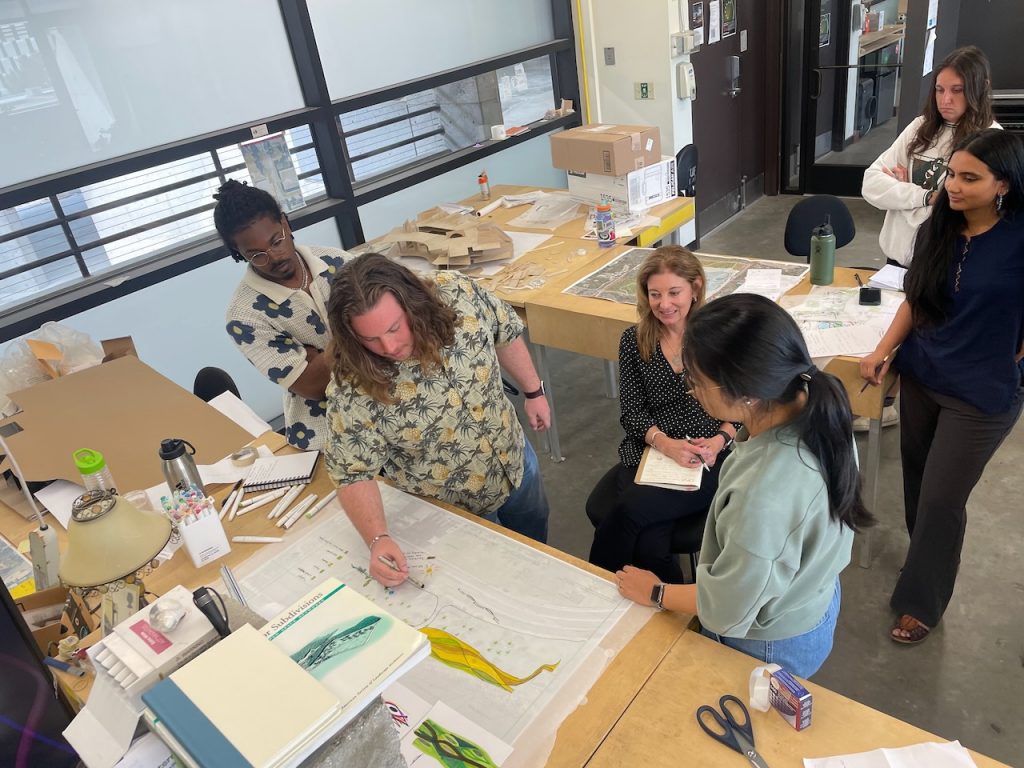Thursday, June 5, 2025
By: Cara Jackson
Salty breezes, six old grouches and student collaboration — With that unlikely combination, a new ecological project is taking shape along the shoreline in Sebastian, Florida.
The University of Florida Landscape Sustainability Collective collaborated with the city of Sebastian and the Ocean Research and Conservation Association (ORCA) to design and implement a student-led buffered shoreline. The students, part of the University of Florida’s Department of Landscape Architecture, crafted an ecologically resilient design that incorporates native plants, supports biodiversity, reduces runoff, and celebrates Sebastian’s history.

The project was student-led and spearheaded by Veronica Cancio, a current master’s student studying landscape architecture. Cancio was introduced to the world of landscape architecture while she was working for ORCA – the same organization that later reached out with the buffered shoreline project.
“It was really nice to apply what we are currently learning in school and our classes to a real-life project that will be implemented,” Cancio said. “I just can’t wait to see how it turns out.”
The students had two weeks to gather ideas for their design. They conducted a site analysis and created two differing concepts that merged into one. The students structured the shoreline into different zones based on nearby native ecosystems such as marshes, mangroves and meadows. The team chose a colorful plant palette that is both resilient and saltwater-tolerant. The plants also bloom at different times of the year, providing a pop of color no matter the season.
The team also integrated local history, nodding to the town’s motto — “Friendly people and six old grouches” — by designing a sitting area in homage to the “grouches.” Additional features included shell pathways for accessibility and improved stormwater drainage.
“It was a really collaborative process,” said Marc Grossberg, a landscape architecture master’s student and founder of the Landscape Sustainability Collective. “We were lucky to have lots of members on the team who came from conservation and environmental science backgrounds, and other members of the team who came from more design and artistic backgrounds. And being able to have everybody in that conversation together was really important.”

The students also expressed their willingness to be involved in the site’s installation, getting their hands dirty by planting the species they had personally chosen. “We’re hoping to get our hands dirty when it comes to putting these plants in the ground,” Cancio said.
“This is what got me into this program and field,” Cancio said. “Projects like this where you’re not only implementing your knowledge but also how you’re impacting the environment.”
This project provided the students with real-world, hands-on experience in landscape architecture. “It’s not very often that, as students, we have the opportunity to work on a project that is actually real, that is bound by a real budget, has real stakeholders, and is actually going to be put in the ground,” Grossberg said.
“It’s extremely exciting just knowing that it’s something that is going to actually move forward, but also knowing that we’re going to be able to physically help with the building of that project,” Grossberg said.
“It’s extremely important for landscape architects to have that experience of actually getting their hands in the dirt, pulling the plants out of the pot, digging the holes and putting them in the ground, because that provides you with a pretty essential context for when you’re doing your designs to actually understand what the labor looks like that goes into that project,” Grossberg said.
The faculty and staff who have helped guide the team have taken notice of the students’ hard work and passion for the shoreline project.
“I’m incredibly proud of the students for their work on this project. What began as a competition evolved into a true collaboration, where the best ideas came together in a unified design,” said Dr. Jules Bruck, chair of the UF Department of Landscape Architecture. “The students not only delivered a professional, polished final product but also gave an elegant presentation. Their clients – the city of Sebastian and the Ocean Research and Conservation Association – were thrilled with the results.”
For the students, this wasn’t just a class assignment. It was a chance to apply their knowledge hands-on and create something both beautiful and functional.
